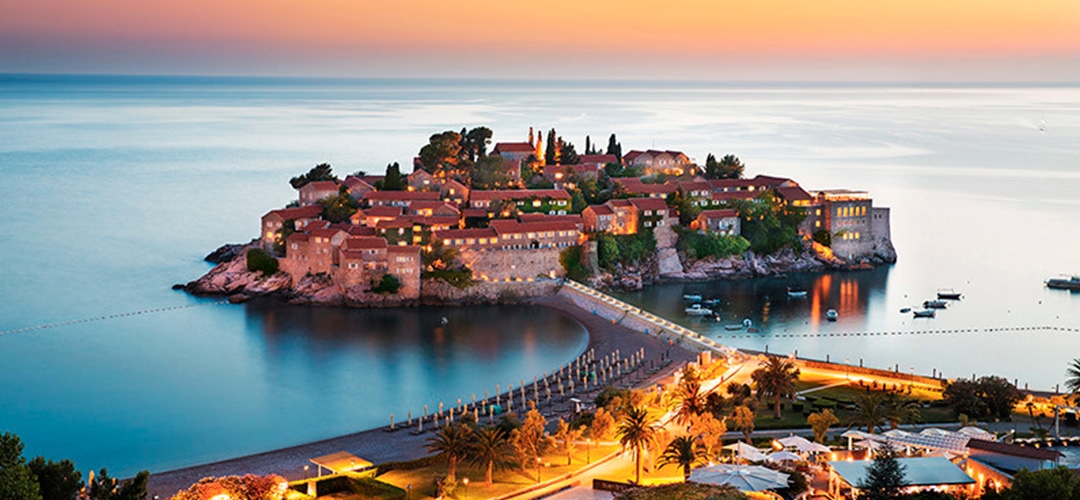
At down, under the first rays of light, within the calm vast sea of the Budva Riviera, the island of St. Stefan appears as unreal as an illusion: peaceful, mysterious and exciting. At this time of day it can be compared with a grounded stone ship, while in the evening, when the moon hovers alone above the open sea and when the lights in this unique town are turned on and their reflection scattered all over, it resembles more a reflection of a star in the sea. The picture-illusion will last until a gentle northeastern wind corrugates the Adriatic, until the dark blue plush is disturbed by the shadows from the seashore and until dawn, when St. Stefan slowly returns to the shape of what it really is – a town on an island that is both fascinating and unique on the tourist map of the “pearls of nature”.
St. Stefan is a highly rated town-hotel and figures among the most exclusive summer resorts at Montenegro. It is in particular a cult site of the jet-set, the vacation place of rich clientele from all over the world. Statesmen, industrialists, film stars, top sportsmen and all those who can afford to pay more than 1,500 euro per night in the already legendary villa 118, constitute part of the “poetics” of the place. The names of Willy Brandt, Bobby Fisher, Ingmar Stenmark, Monica Viti, Sophia Loren, Sylvester Stalone, Claudia Schiffer… have become emblematic, a trademark of the highest service which, lately, even those who were recently enriched by other world locations cannot resist. However, as it has always been, pleasure is dear. Then again, one honest observation from the extensive book of impressions on St. Stefan, written by the legendary film diva Sophia Loren, summarizes something that shouldn’t be always connected with money and wealth: “It is as if here I were back in a town from the most beautiful fairy tale of my childhood.”
Indeed, in this town-hotel, with only 36 houses, swimming pools that resemble water terraces, waterfalls and fountains amidst fragrant gardens above which hang the scents of the Montenegrin Mediterranean seashore and the reverberating sounds of the unending strikes of waves against the high cliffs of St. Stefan, everything resembles a fairy tale. The roots of the fairy tale date from the 15th century, from the Paštrović clan and its desire to protect the fortification built in the sea from the spoils from Turkish pirate ships and which they named after a saint. Each of the 12 built houses, actually small fortresses with watchtowers, defense walls and loopholes were the share of each of the 12 clans participating in the fight against the enemy. In time, the settlement expanded with new buildings, becoming a town; the trade and political center of the Paštrović family. The manner in which the Paštrović family organized the defense of St. Stefan and general administration of the town in it was quite similar to those in Malta from the period of the crusaders.
Today's look of the town – with stome houses arranged in a row one below another and leaning one upon another like clusters – “full of unimaginable pleasures that make a kingdom of all the senses”, as one of the travel writers put it – is truly unique. Each one, like a separate whole, faces the sea and the sun. Observing them under the dazzling blue that glitters like a living heavenly sphere between the land, sea and sky, one realizes that nothing should be disturbed in this space where the perfect harmony of the Mediterranean beauty of a town is achieved.
Source: New Review JAT Airways, 2004/8
Text: Zlatica Ivković